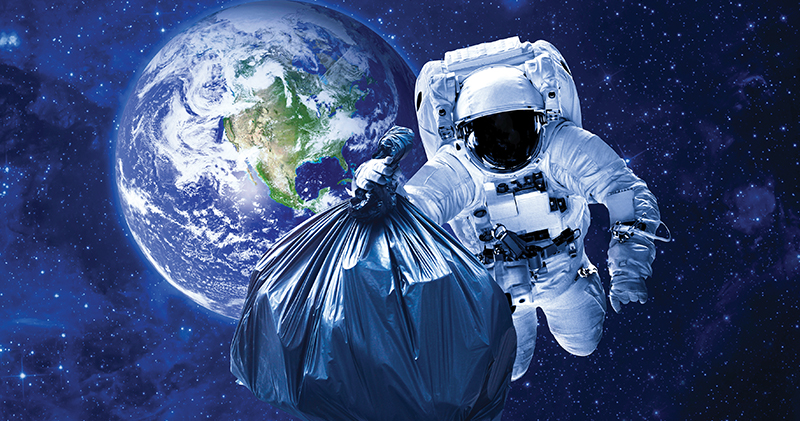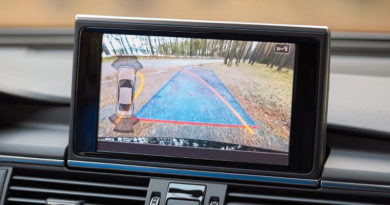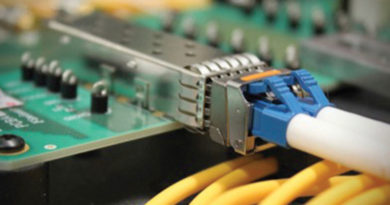Space Junk Keeps Falling on My Head
By Leslie Ellis
Hello again! When we last met on these pages, a proposed federal redefinition of “broadband” was brewing, from 25 Mbps downstream / 3 Mbps upstream, to a smooth, symmetrical, and implausible 100×100 Mbps, in both signal directions. Update: That development was quickly scuttled. But! Not without raising questions. Among them: How in the world could satellite-delivered Internet ever achieve such lofty speed targets? Game over?
The game is far from over. Since then, and as summer slid into fall (rather beautifully here in Denver, it’s worth noting), the brinksmanship tale about space-based Internet got juicier and juicier. This is a nerd story that has everything! Billionaires (Elon Musk, Jeff Bezos). Civilian astronauts, including an iconoclast (Richard Branson) and a TV space hero (William Shatner).
But wait! There’s more: Epic public quibbling (Amazon v SpaceX). Sandwich-sized satellites that are fast-tracked to miniaturize even more. Feverish levels of financial ($35+ billion) and tactical momentum. A dramatic bankruptcy turnaround funded by British taxpayers (OneWeb). And, just to keep things real, a horrible code-name that stuck, becoming an instant classic in unintended branding (read on).
Arguably, all of this space hullaballoo is about being the lead dog in satellite-delivered Internet — even as mobile 5G stations itself to be the scissors of the next wave of cord-cutting (this time wired broadband).
There’s a lot to unpack about these mega-constellations currently under construction, hundreds to thousands of miles above our heads. This installment focuses on five reasonably nerdy aspects. Here goes:
1. No space junk is going to fall on your head.
The title of this column should serve only as a cheerful earworm of a nod to prolific music nerd Burt Bacharach and his 1970 smash hit of a similar title, involving raindrops instead of space junk. Technically, you are 100 million times more likely to get hit by lightning than you are to get hit on the head by something that falls back to Earth from space. Also, most objects attempting re-entry into Earth’s atmosphere will burn up before they get anywhere near you. Lastly, the intent here is to draw your attention to the eyebrow-raising volume of satellite stuff going up into various orbital locations above our planet. If you are humming the Burt tune right now, you’re welcome! It’s a dandy! Isn’t it?
2. The volume of satellites going up into space warrants looking up and wondering why.
Starlink, the consumer-facing brand of SpaceX, Elon Musk’s endeavor, is the undisputed leader in orbital positioning so far, with about a thousand LEO (low earth orbit) satellites in the air, of a planned 12,000; as many as 20,000 more are anticipated. The U.K.’s financially-resuscitated OneWeb is 288 satellites into a planned constellation of 650. Project Kuiper, which is part of Amazon, wants to put up a 3,236 satellite constellation, so far shrouded in carefully-executed secrecy. Canada’s Telesat is cooking up a 300-ish satellite service. This is a partial list.
And now this, from the Department of the Obvious: Just as you can’t send a truck into geostationary orbit for a service call, there are no trash cans or recycle bins in space. Still, the issue isn’t whether or when so-called space junk will fall out of the sky. More, it’s about whether the stuff already up there (and scheduled to go up) will be able to continue to do what it’s supposed to do. We’re talking long-view here.
3. Spot beams are spotty.
The blessing and the curse of space-delivered Internet is the “spot beam.”
It’s just as it sounds: a spot of connectivity, roughly 50 kilometers in diameter, beamed to Earth from space. If you’re inside the spot, you are connected! (That’s the blessing.) If 1 million other people are also inside the spot, they’re theoretically connected, too! (That’s the curse.) The capacity inside each spot beam is shared. Oh, and only one spot beam per area. This is why the sweet spot for space-based Internet is wide open places, not cities. Fun fact, only partially germane to this part of the story: A LEO satellite revolves around Earth once every hour and a half. For that reason, naked-eye satellite spotting is far busier than it used to be! May your night skies be clear, bright, and free of wildfire smoke, to try it out yourself. It’s easy: Look up.
4. The “Better Than Nothing” branding now associated with Starlink is a useful lesson in what not to do.
Truth is truth, and anyone who’s ever been stranded somewhere, on purpose or not, knows how delicious a tiny sip of Internet can be, especially after a connectivity drought. What is that tiny sip of Internet? It’s “better than nothing” – which is also what Starlink’s beta test is called. Is this the kind of phrasing that makes marketing people twitch? Oh yes. Is it a catchy brand? Only if it’s your only Internet option. Otherwise, yes, “better than nothing” probably has some branding issues.
5. At some point, there’s always a wire.
This is one of those plot lines that’s reminiscent of how TV didn’t kill radio, and cars didn’t kill trains. Different ways to get connected are coming. Sure. One of them is 5G, which is mobile, so, a reasonably known entity. Another is satellite, which is arguably something this industry knows far better. And unless I’m missing something, that wireless conduit, at some point, will need to hand its payload off to a wire. Same as it ever was. Use your wires wisely!
That’s it for now. Stay nerdy, friends.
 Leslie Ellis,
Leslie Ellis,
President,
Ellis Edits Inc.
leslie@ellisedits.com
Leslie Ellis is a tech writer focused on explaining complex engineering stuff for people who have less of a natural interest than engineers. She’s perhaps best known (until now!) for her long-running weekly column in Multichannel News called “Translation Please.” She’s written two broadband dictionaries, one field guide to broadband, and is a behind-the-scenes tech translator for domestic and global service providers, networks, and suppliers. She was named Technology Woman of the Year in 2010 by the SCTE and WICT, and was inducted into the Cable Hall of Fame in 2019. Leslie is a member of SCTE’s Rocky Mountain Chapter.
Shutterstock




